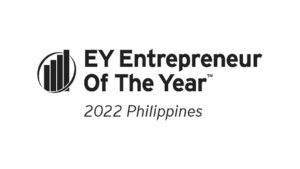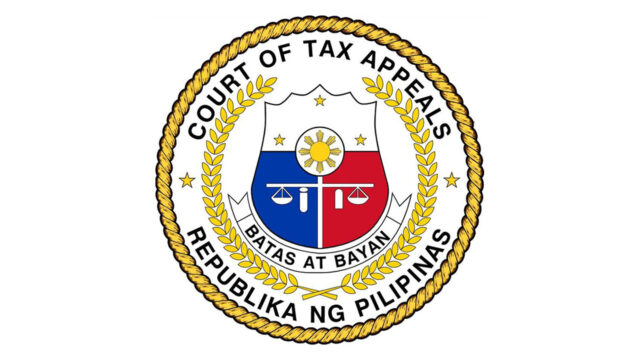Inflation may ease to near 4-year low
By Luisa Maria Jacinta C. Jocson, Reporter
HEADLINE INFLATION likely slowed to a near four-year low in September amid falling prices of rice and fuel, giving the Bangko Sentral ng Pilipinas (BSP) room to cut benchmark interest rates further, analysts said.
A BusinessWorld poll of 15 analysts conducted last week yielded a median estimate of 2.5% for the September consumer price index (CPI).
If realized, September inflation would be sharply slower than 3.3% in August and 6.1% in the same month a year ago.
This would also be the lowest monthly print in nearly four years or since the 2.3% clip in October 2020.
The Philippine Statistics Authority is scheduled to release September inflation data on Friday (Oct. 4). The BSP has yet to release its month-ahead inflation forecast.
Easing rice prices likely caused the CPI to go down this month, analysts said.
“Price pressures will ease on rice, which makes up a significant proportion in the heavily weighted food basket. Prices for the staple soared in 2023 when India banned the export of non-basmati white rice,” Sarah Tan, an economist from Moody’s Analytics, said in an e-mail.
Rice inflation eased to 14.7% in August from 20.9% in July. Rice typically accounts for nearly half of overall inflation.
The Agriculture department earlier this month said they are eyeing to bring down rice inflation to single-digit levels.
“The cut in the tariff on imported rice, which took effect at the end of June and will last until year’s end, will help bring down inflation for this staple,” Ms. Tan added.
In June, President Ferdinand R. Marcos, Jr. issued Executive Order No. 62, cutting tariffs on rice imports to 15% from 35% until 2028.
“Food price base effects will remain quite favorable, stemming from last year’s rice price surge. This should pull food inflation down quite sharply, even if there is no material change month to month,” Pantheon Macroeconomics Chief Emerging Asia Economist Miguel Chanco said.
Philippine National Bank economist Alvin Joseph A. Arogo said the steady food and non-alcoholic beverage index in August also “provides buffer against the potential adverse impact of the current and upcoming typhoons on overall food prices.”
Lower fuel prices may have led to slower September inflation, analysts added.
“Disinflation may come largely from broad food and transport CPI. Particularly, we expect declines from rice prices and lower gasoline/diesel prices from declining global prices,” Union Bank of the Philippines, Inc. Chief Economist Ruben Carlo O. Asuncion said in an e-mail.
In September, pump price adjustments stood at a net decrease of P0.95 a liter for gasoline, P2.10 for diesel and P2.35 for kerosene.
“Retail fuel prices fell by as much as 7% month on month on the back of lower oil prices globally and a stronger peso against the US dollar,” Aris D. Dacanay, economist for ASEAN (Association of Southeast Asian Nations) at HSBC Global Research, said.
“Transport deflation should also deepen, further pulling down headline inflation, thanks to the rolling over in domestic pump prices, which reflect the weakness in global oil prices,” Mr. Chanco added.
“(Inflation) was likely within the target band as an effect of easing supply-chain constraints, slowdown in oil prices, and inflow of agricultural imports. However, it is still threatened by natural calamities that can disrupt food supplies,” Oikonomia Advisory & Research, Inc. said.
MORE ROOM FOR RATE CUTS
The expected downtrend in inflation in the coming months will give the BSP more space to continue its policy easing cycle, analysts said.
“For the coming months, it is possible for inflation to sustain at 3% levels for the rest of 2024, or well within the BSP inflation target range of 2-4%, that could justify further BSP rate cuts that would match any future Fed rate cuts from 2024-2026,” Rizal Commercial Banking Corp. Chief Economist Michael L. Ricafort said.
“With CPI inflation remaining on a downward path and the US Fed already starting its cutting cycle, BSP has plenty of scope to further remove the restrictiveness of its monetary stance,” Nomura Global Markets Research Chief ASEAN Economist Euben Paracuelles said. “We still forecast BSP to cut by 25 bps at each of the October and December meetings, and by 75 bps in the first three meetings in 2025, bringing the policy rate to 5%.”
BSP Governor Eli M. Remolona, Jr. last week signaled that the central bank could deliver a 25-bp rate cut each at its remaining two meetings.
The Monetary Board in August reduced borrowing costs by 25 bps, bringing the key rate to 6.25% from the over 17-year high of 6.5%.
It will have its next policy review on Oct. 17, while its last meeting for the year is scheduled for Dec. 19.
Meanwhile, the Fed this month kicked off its easing cycle with a supersized 50-bp cut, bringing its target rate to the 4.75-5% range.
Markets are fully pricing in a cut of at least 25 bps at the Fed’s November meeting according to CME’s FedWatch Tool, Reuters reported.
“A cooling inflation print for September will convince the BSP that inflation has returned to target for good after July’s spike. Coupled with the recent 50-bp cut by the US Federal Reserve, this increases the chances for an October rate cut in the Philippines,” Moody’s Analytics’ Ms. Tan said.
“Indeed, the start of the monetary policy easing cycle in the US gives the BSP room to further loosen its monetary policy. The BSP could move with two 25-bp cuts in the fourth quarter across their two meetings in October and December,” Ms. Tan added.
Pantheon Macroeconomics’ Mr. Chanco said that if there is no “major shock” until the next inflation release, then the Monetary Board could implement another 25-bp cut at its October meeting.
“However, potential risks from oil and typhoons may keep the BSP cautious about interest rate cuts. The central bank is likely to opt for a gradual approach, with 25-bp reductions in October and December,” Security Bank Corp. Chief Economist Robert Dan J. Roces added.
Zamros Bin Dzulkafli, an economist at Maybank Investment Banking Group, likewise expects the BSP to reduce rates by a total of 75 bps this year, “supported by the recent ‘aggressive’ 50-bp rate cut by the US Fed.”






 CZARINA J. SEVILLA’S en
CZARINA J. SEVILLA’S en











